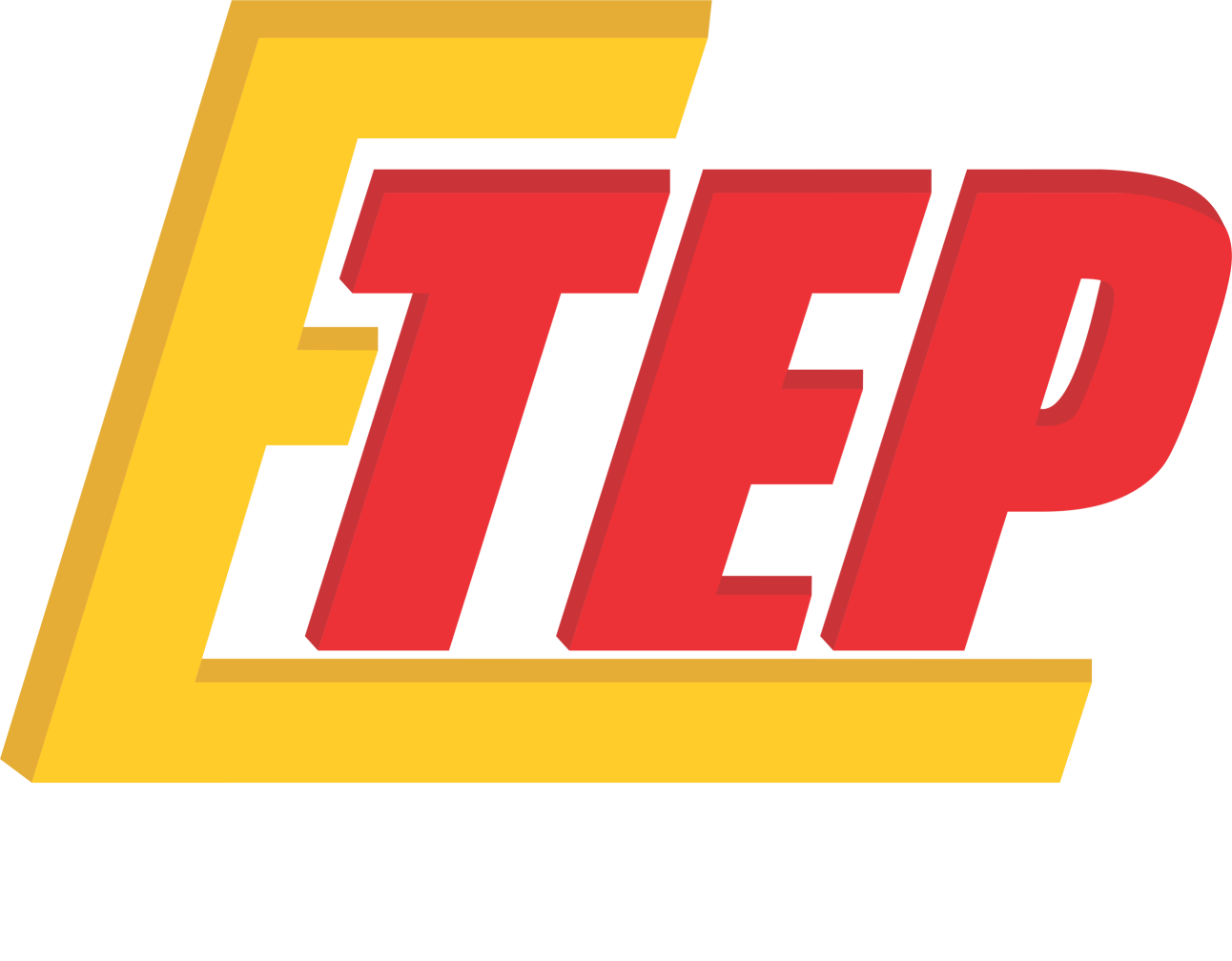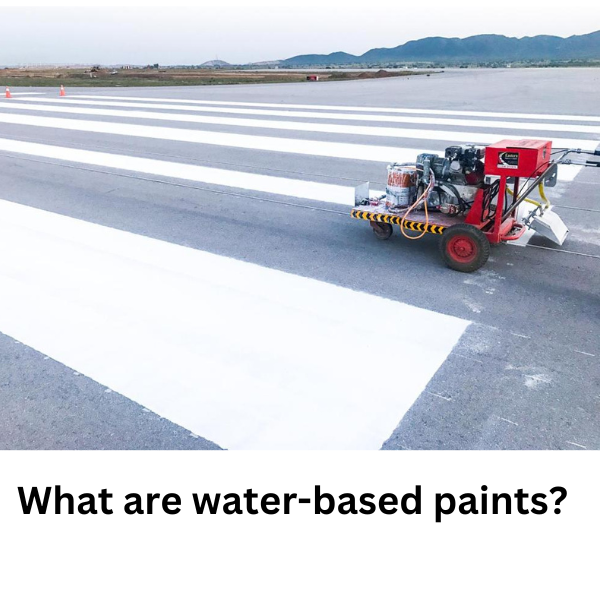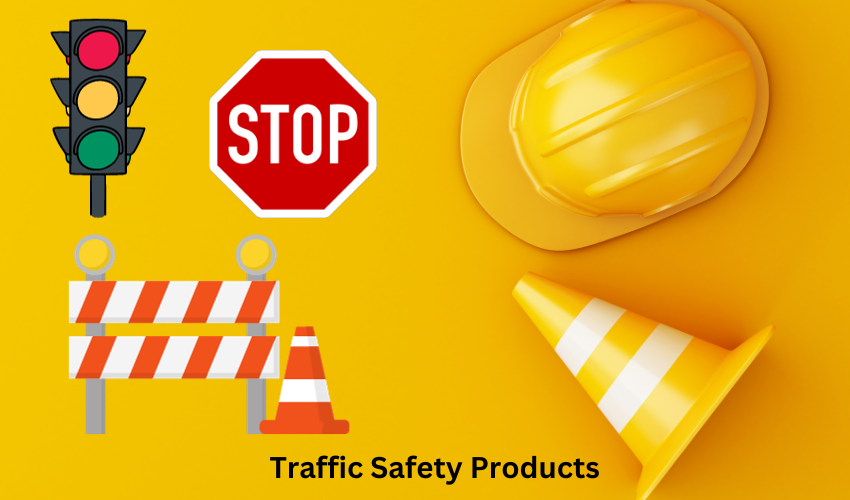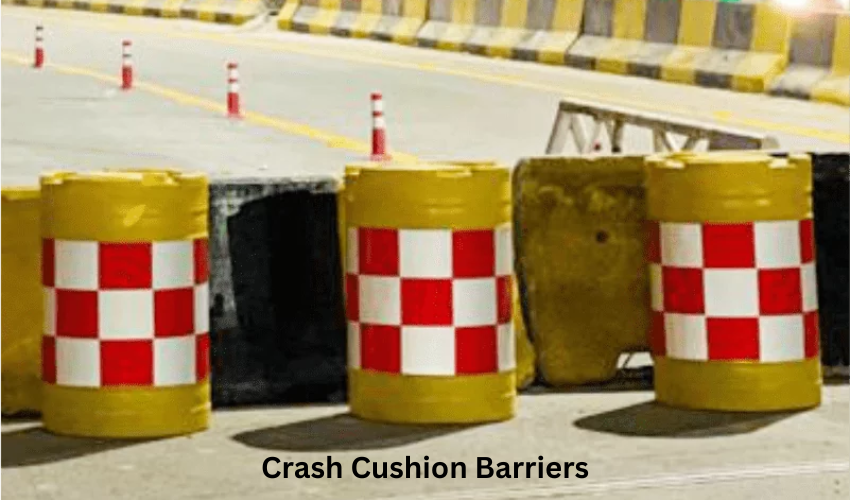Which are the best speed breakers in Pakistan? What are the different kinds of speed breakers? Which speed breaker is best suited for Pakistan? Brace all your questions as this blog post will answer them all!
Have you ever thought about how traveling on busy roads can be really dangerous, especially when cars are going fast? This puts both drivers and people walking at risk. Making sure that roads are safe is really important for neighborhoods and the people in charge of road safety.
This is where the role of speed breakers emerges as a critical solution to the challenge of road safety. Speed breakers, play a vital role in controlling vehicular speed and reducing the risk of accidents.
But how? Let us help you explore this in detail!
What Is a Speed Breaker?
For those who don’t know what a speed breaker is, let us first explain briefly about it. A speed breaker is commonly known as a speed bump. It is a raised part of a road designed to slow down vehicular traffic. It is a type of safety element that slows down the speed of the vehicles. This safety feature is used in specific areas, such as near schools, residential zones, or places with heavy pedestrian activity.
When vehicles drive over a speed breaker, they have to decrease their speed due to the bumpiness of the surface. This helps in preventing accidents, promoting road safety, and creating a more controlled environment for both drivers and pedestrians.
Speed breakers come in various types, shapes and sizes, and they play a crucial role in regulating traffic speed and improving overall road safety.
Six Uses of Speed Breakers
Speed breakers or speed bumps, encompass raised segments on road surfaces that effectively reduce vehicular velocity as they are traversed.
Their application often extends to discouraging rapid speeds within residential zones or proximity to educational institutions, where pedestrians and other susceptible road users are frequent.
The six main uses of speed breakers are as follows:
Enhancing Safety
By diminishing vehicle speeds, speed breakers contribute to elevating safety levels for pedestrians, cyclists, and other road users who are prone to vulnerability. Moreover, they aid in curbing the intensity of resultant accidents.
Mitigating Noise
The decelerating effect of plastic peed breakers results in reduced noise pollution, as higher speeds are typically associated with greater noise generation by vehicles.
Promoting Energy Conservation
The moderation of vehicle speeds contributes to lowered fuel consumption and emissions, positioning speed breakers as pivotal tools in endeavors to conserve energy and minimize the ecological footprint of transportation.
Facilitating Traffic Flow
On select occasions, speed breakers can be strategically employed to enhance traffic flow by inducing vehicles to decelerate and navigate more predictably. This serves to alleviate congestion and enhance the overall rhythm of traffic movement.
Elevating Aesthetics
In specific instances, speed breakers may be harnessed to augment the visual appeal of an area, adding an element of visual intrigue or serving as decorative features.
Types of Speed Breaker
Speed Breakers are of different types. The eight basic types of speed bumps are mentioned below:
- Traditional Speed Bumps: These are the most common type, characterized by their rounded shape. They are usually shorter in length and can be quite abrupt, causing vehicles to slow down significantly.
There are aluminum speed breakers as well!

- Speed Humps: Similar to speed bumps, but they are wider and longer. Speed humps are more gradual and offer a smoother ride at reduced speeds.
- Speed Cushions: These are essentially speed humps with gaps for the vehicle’s tires. They allow larger vehicles, like buses and emergency vehicles, to pass through without much disruption, while still slowing down other vehicles.
- Rumble Strips: These are grooves or ridges on the road that create a rumbling noise and vibration when vehicles drive over them at high speeds. They are often used on highways to alert drivers to reduce speed.
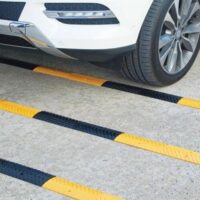
- Rubber Speed Breakers: Also known as rubber speed humps/bumps. These speed breakers are made from durable rubber materials and are designed to be flexible yet sturdy.
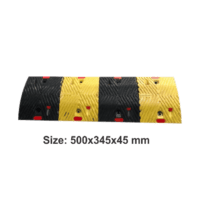
- Chicanes: Chicanes are a series of alternating curves on the road. They force drivers to slow down and navigate through the curves, which helps in reducing speed.
- Vertical Deflections: These are a range of measures that include raised intersections, speed tables, and speed humps. They aim to make drivers lift their foot off the accelerator, thus reducing speed.
- Speed Ramps: These are elongated speed breakers that cover a larger distance, usually at parking lot entrances or private roads. They have a gentler slope compared to traditional speed bumps.
Speed Bumps VS Speed Hump
Speed bumps serve as more assertive measures for controlling traffic compared to speed humps. They prove particularly effective in locations where there’s close interaction between pedestrians and vehicles, such as parking lots and driveways.
Generally, a speed bump reduces vehicle speed to a range of 2 to 10 mph, affording both pedestrians and drivers ample time to react safely to each other’s presence. It is worth noting that rubber speed bumps are seldom employed on public roads due to their propensity to require vehicles to almost come to a halt to traverse them, potentially causing harm to cars moving at regular speeds.
Speed humps, also known as road humps or undulations, serve their purpose in 10–15 mph speed zones. They are commonly observed on residential streets or connecting roads, where maintaining a steady traffic flow is essential, yet high speeds could pose a threat to pedestrians. These traffic management tools are frequently employed in areas such as playgrounds and school zones.
Variations in Speed Bump Types Across Various Locations
Speed bumps serve as road safety devices, promoting the security of both pedestrians and vehicles. Their applications are diverse, and they can be implemented in a variety of settings. Categorized by their placement, speed bumps are typically classified into six distinct types. Here are the details below:
Highway Speed Bumps
Speed control measures are strategically placed on highways to regulate vehicular speed and enhance safety. The primary purpose of these measures is to enforce speed limits on vehicles in motion.
Unlike their prevalent usage on residential roads, speed bumps are less commonly employed on major highways. This is due to the higher velocities at which vehicles travel on these thoroughfares. The abrupt impact caused by road irregularities or speed-reducing structures can potentially lead to vehicle damage and disrupt the pathway of emergency vehicles.
Highway speed bumps also find utility on other types of roads and urban streets where interactions between pedestrians and vehicles are more frequent. Placing them ahead of traffic signals or road markings compels motorists to come to a halt at red lights or adhere to designated pathways.
On major highways, rumble strips are commonly installed. These strips are positioned either along the centerline of the road or at its shoulders. They generate vibrations and audible cues that alert inattentive drivers to potential hazards.
According to traffic data compiled by the Federal Highway Administration, the implementation of speed bumps and road bumps significantly contributes to the reduction of collisions involving both vehicles and pedestrians.
Driveway Speed Bumps
Speed bumps placed on driveways decelerate vehicles as they travel along the drive. Traffic management tools such as speed humps, speed bumps, speed tables, and speed cushions lower vehicular speeds, helping to prevent accidents.
Speed bumps serve an additional purpose of notifying drivers about pedestrians present on driveways, roadways, or sidewalks. They establish a secure zone for individuals using pedestrian crossings, crosswalks, and sidewalks.
These structures compel drivers to maintain speeds below 15 miles per hour. Driveway speed bumps are crafted from diverse materials, including recycled plastic, rubber, steel/metal, concrete, and asphalt.
They incorporate reflective studs or colored markings to enhance visibility for drivers during nighttime or adverse weather conditions. Their elevation can range from 25 mm to 100 mm. For driveway speed bumps, a minimum length of 900 mm is recommended.
In cases where your driveway lacks speed bumps but you desire to install them to reduce speed and potential accidents, it is essential to seek approval from neighbors and obtain consent from local authorities.
Gravel Road Speed Bumps
Gravel roads lack an added surface material, instead featuring dirt and gravel directly on the top layer. Consequently, when motor vehicles, cyclists, or any other type of vehicle traverse these roads at high speeds, the loose gravel and dirt can scatter, potentially causing inconvenience to those passing through. Moreover, this dispersion can disturb the residents in the surrounding neighborhood.
Implementing measures to mitigate these issues, such as introducing speed bumps designed for gravel roads, speed limit indicators, stop signs, road warnings, and various types of signage, can effectively address these concerns. Vehicles traveling on the loose gravel surface also experience prolonged braking distances, posing challenges for them to decelerate promptly when moving at high speeds.
These gravel road speed bumps serve to regulate traffic flow by compelling vehicles to slow down to speeds below 15 mph, thereby creating a safer environment for pedestrians navigating crosswalks and safety lanes.
Dirt Road Speed Bumps
Dirt road speed bumps serve the same purpose as gravel road speed bumps, but they are specifically employed on dirt roads as opposed to gravel ones. Furthermore, dirt roads lack a smooth surface. When vehicles traverse these roads at high speeds, they can scatter dirt, creating confusion for pedestrians by obscuring the pathway.
The dispersion of dirt can also create challenges for residents in the vicinity, as it becomes arduous to maintain their homes free from dirt. An excellent resolution to mitigate this dirt dispersion involves the installation of dirt road speed bumps at locations on dirt roads where foot traffic is substantial and residential properties are nearby.
Specially designed rubber, plastic, and steel speed bumps for dirt roads are more durable compared to asphalt or dirt speed bumps, thus providing longer-lasting solutions for such road conditions.
Garage Speed Bumps
Ensuring the well-being of visitors and individuals within garages holds paramount importance. Implementing speed limits in situations of high vehicle and pedestrian traffic proximity is crucial. The installation of speed-reducing mechanisms, such as garage speed bumps, serves as an effective method for managing traffic flow while upholding safety within the garage premises.
In cases where cyclists, motorists, or other drivers tend to disregard stop signs, parking indicators, and traffic signals within the garage, the strategic placement of speed bumps before these areas can prove to be a viable solution, encouraging adherence to the posted signs.
Strategically positioning speed bumps at intersections within the garage, where traffic converges from various directions toward the exit point, offers a valuable means of controlling speed and traffic movement, ultimately diminishing the likelihood of collisions involving high-speed vehicles.
Parking Lot Speed Bumps
Speed bumps within parking lots effectively regulate vehicle arrangement and speed. All vehicles, whether buses, cars, motorbikes, ambulances, or others, must adhere to a designated speed limit established by the parking lot management through the implementation of speed bumps.
Parking lots serve as areas of interaction between vehicles and pedestrians. Consequently, it remains imperative to ensure that drivers operate their vehicles at reduced speeds to prioritize the safety of pedestrians. This approach not only diminishes accidents within the parking premises but also enhances visitor satisfaction.
Efficient and Practical Traffic Control
Speed bumps and humps play a vital role in promoting secure driving within pedestrian zones. Speed humps are well-suited for locations where consistent traffic movement is required, while speed bumps are more appropriate for compact areas where pedestrians and vehicles coexist closely.
Both options demand less intricate planning than alternatives like roundabouts or one-way streets for traffic calming. Moreover, pre-fabricated modular versions can be easily and cost-effectively installed on existing surfaces.
In conclusion, speed breakers play a crucial role in the intricate network of road safety measures, making roads more secure for everyone pedestrians, cyclists, and motorists alike. Their diverse implementations and varied benefits underscore their importance in achieving efficient and practical traffic control while ensuring the well-being of all road users.
Frequently Asked Questions:
What is a speed breaker?
A speed breaker is a raised portion of the road designed to slow down vehicles, enhancing safety in areas where controlled speeds are necessary.
What are speed humps called?
Speed humps are also referred to as “sleeping policemen” or simply “humps,” serving a similar purpose to speed breakers but with a gentler slope.
What is speed bump slang for?
“Speed bump” can be slang for a minor obstacle or challenge that temporarily slows down progress in a project or task.
How do speed breakers generate electricity?
Some speed breakers are designed with piezoelectric sensors or other mechanical systems that convert the kinetic energy from passing vehicles into electrical energy, which can be stored or used locally.
Best Speed Breakers in Pakistan
Eastern Highway Company is a proud producer of the best speed breakers in Pakistan. We offer a range of speed breakers such as plastic, rubber and aluminum. You can contact us to learn more about speed breakers and to place an order!


